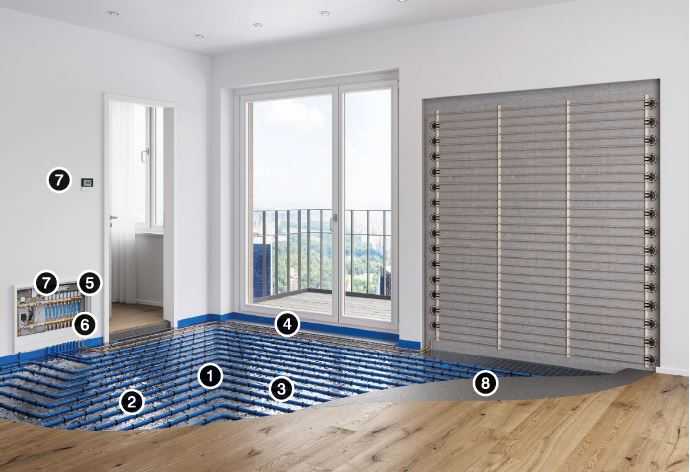
Whether our house will be heated by radiators or whether we decide to use underfloor heating should be decided at the design stage. This is related to the planning of expenses for the heating installation, and the subsequent arrangement of the space inside the rooms where we decide to use underfloor heating. While radiators do not require any special provisions in the project, underfloor heating requires the design of additional floor layers and the selection of an appropriate finishing material, as well as the installation of a high-quality condensing boiler. It is well known that underfloor heating works best in large rooms, e.g. in a large living room, and where we especially need a warm floor, because it is nice to stand on it with a bare foot - e.g. in the bathroom. So often the house is heated by radiators and heating hidden under the floor. Such a patent requires slightly more complicated technical solutions at the level of the boiler and the water distribution system.
Before deciding on a heating installation, it is worth taking a closer look at modern radiators. If you have doubts about their visual attractiveness and functionality, this text should dispel them.
Room heaters
Modern plate and panel radiators are simply pleasing to the eye. If we still remember the archaic cast iron ribs radiators - unleavened, ugly and forever dusty between the hard-to-reach ribs - it's worth getting rid of this memory. Plate heaters, consisting of oval plates arranged in a vertical or horizontal orientation, are very aesthetic and come in many sizes and colors. Their slightly old school design makes them perfect for both traditional interiors, which we want to slightly refresh, and modern ones, in which we want to emphasize stylish accessories associated with an epoch that is rightly gone by. The number of panels is selected depending on the needs, and the saturated intense color of the radiators can become an ideal counterpoint for white walls or furniture.
Panel radiators are more popular. Rolled steel profiled panels are very aesthetic and do not mar the room, even if they remain in view. Grill. All covers are easy to remove to get between the vertical water channels and to clean the radiator well. This should be done after each heating season (i.e. before the next one), because a lot of dust and crumbs fall into the radiator through the grill, and if the cat likes to sleep on the heater - also hair. When a lot of dirt accumulates in the radiator, an unpleasant smell will fall into the apartment along with the heated air.
More and more often, we also use decorative radiators, which at first glance are not associated with heating elements at all. Glass and mirror covers, graphics, elements bent in the shape of modern sculptures or wall decorations effectively divert the thought from the fact that this interior element is a radiator. Decorative radiators are perfect for modern designer interiors, apartments and lofts.
Bathroom heaters
Bathroom radiators, like no other, must also be suitable for drying towels and take up relatively little space. The most popular are ladder models that work well in damp rooms and are also a bathroom decoration. In addition to traditional structures flatly adjacent to the wall, we also find radiators that can be arranged perpendicularly to the wall, which makes it possible to divide the bathroom into zones and facilitate drying of towels or linen. Corner radiators are an interesting solution, which work well in small bathrooms, because they take up a minimum amount of space and can be installed in a corner to which we have limited access anyway.
There is no clear answer to the question of a radiator or a floor heating unit. However, if your decision to install underfloor heating was dictated only by discouragement related to the memories of arranging a flat in a block of flats, be sure to check out the store with radiators - there is really a lot to choose from.